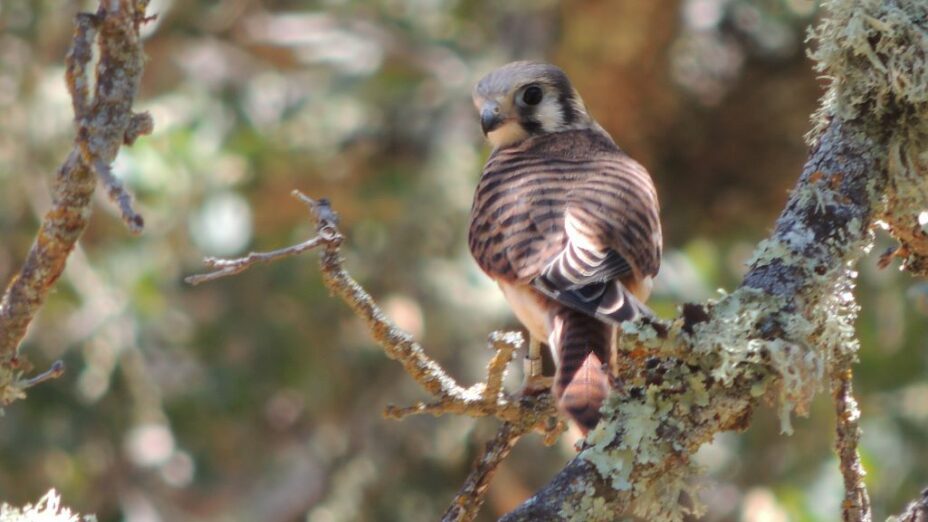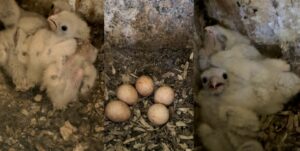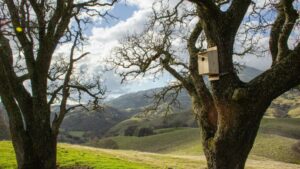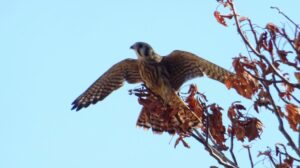
On a mid-May afternoon, Save Mount Diablo Land Programs Director Sean Burke headed out to check on some local nest boxes for American kestrels. These boxes have been instrumental for providing nesting habitat for this species around Mount Diablo.
In an ordinary year, these tiny but mighty raptors would have hatched over a month ago, with some ready to take their first flights.
What he found was not that. Within the four inhabited boxes he checked that day, two contained four eyas (kestrel chicks) each that had hatched around a week prior. And two contained clutches of five eggs each that had yet to hatch!
Why Are Kestrels Hatching So Late?

Week-old kestrel chicks and eggs in their respective nest boxes. Photo by Sean Burke
The delay is likely caused by the long, cold winter we experienced earlier this year. It delayed the beginning of the spring weather, which had big effects on the ecosystem.
Kestrels aren’t the only birds late to hatch this year; field researchers have observed that other local raptors such as prairie falcons and golden eagles have been following the same pattern. Thanks to the extended cold weather, they likely behaved as if it were still winter.
The effects of changes in the climate can be more far reaching than we expect. Something like a longer cold period can have major impacts on the behavior of animals and plants. The same goes for a warming climate.
Nesting Kestrels

Kestrel box installed by Save Mount Diablo in Curry Canyon. Photo by Floyd McCluhan
Save Mount Diablo will be continuing to monitor our kestrel boxes as their eggs start to hatch.
Last year, we determined that up to 75 percent of our kestrel boxes have served as habitat for these raptors.
Kestrels can be picky with their nesting locations. Nests need to be strategically placed in a relatively open habitat where the kestrels can hunt and high enough so that they can retreat to safety from predators.
Locally, American kestrels can be spotted in areas with open, grassy hills with a few trees in places like Lime Ridge Open Space, Diablo Foothills Regional Park, and of course Mangini Ranch Educational Preserve.
Although kestrels are behind schedule this year, in about a month or so the latest generation are expected to take to the skies on their first flights.
Soon enough, these chicks will be swooping and soaring throughout the grasslands and oak savannas of the Diablo region.

A kestrel takes flight! Photo by Sean Burke
In the last three years, the monitored nest boxes and kestrel releases with our partner Lindsay Wildlife Experience have introduced more than known 90 kestrels into the Mount Diablo area.
Providing habitat for these falcons is extremely important for their success in numbers, as their total population has declined by 69 percent since 1968 when populations began being monitored in northern and coastal California.
Loss of habitat is one of the major causes for the decline in population.
Top photo by Sean Burke

